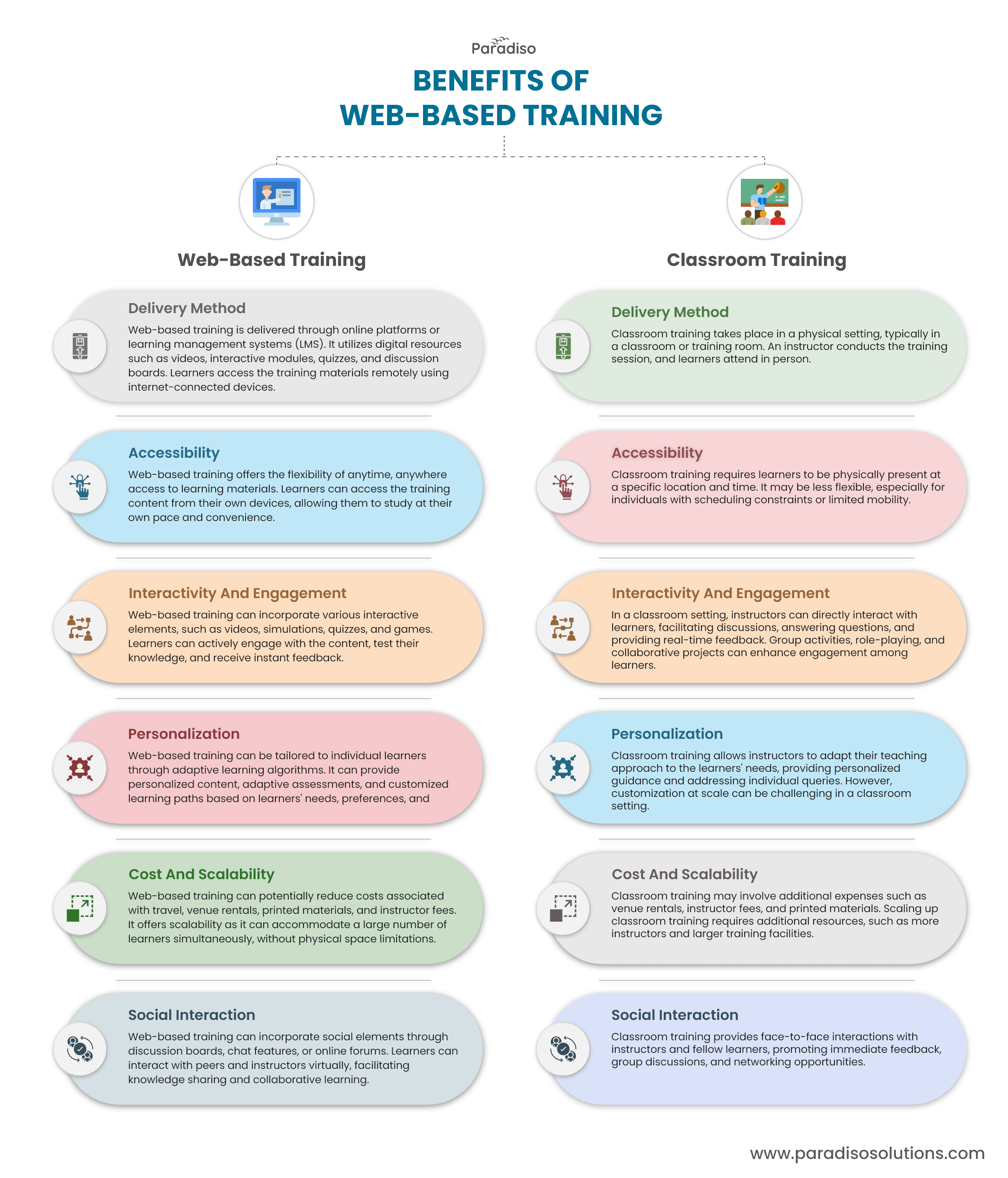Web Based Training vs. Classroom Training: Basic Difference Explained
Web-based training (WBT), also known as online or e-learning, refers to the delivery of educational content and resources through web-based platforms. Learners can access training materials using their computers, tablets, or smartphones, and engage in self-paced learning. WBT offers a wide range of interactive tools such as videos, quizzes, simulations, and discussion boards, which facilitate learner engagement and knowledge retention. It provides the flexibility of accessing training materials at any time and from any location with an internet connection, making it convenient for individuals with busy schedules or those who prefer to learn at their own pace. WBT is particularly effective for subjects that require visual demonstrations, multimedia resources, or remote collaboration.
On the other hand, classroom training also referred to as instructor-led training (ILT), takes place in a physical setting with a trained instructor leading the learning process. It involves face-to-face interactions between the instructor and learners, as well as among the learners themselves. Classroom training offers a structured and organized learning environment where learners can receive immediate feedback, ask questions, participate in discussions, and engage in group activities. This method allows for a more personal and interactive learning experience, fostering collaboration, teamwork, and the development of interpersonal skills. Classroom training is often preferred for subjects that require hands-on practice, real-time demonstrations, and dynamic discussions.
Both web-based training and classroom training have their own unique characteristics and advantages, providing learners with different learning experiences depending on their preferences and needs.













